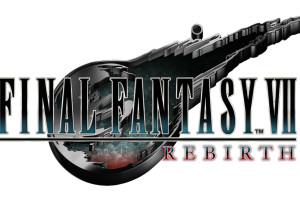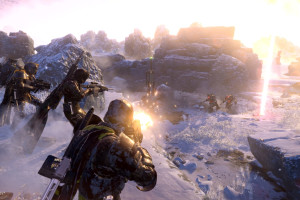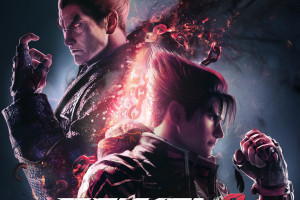The Last of Us Part II Remastered Review: No Return Mode Impressions and Top Features
January 16, 2024
When The Last of Us Part II launched as a breathtaking follow-up to a game that redefined storytelling in the video game medium alongside stellar combat, it was safe to presume it was the last time fans would see the series for quite a while.
Yet just a few years later, developer Naughty Dog returns with The Last of Us Part II Remastered.
The title itself undersells the package quite a bit, though. Sure, it leans into the PlayStation 5's hardware to really fulfill the remaster part.
But what's really intriguing is the additional content that branches in bold directions. Naughty Dog has thrown in some early developmental levels for players to enjoy. Yet the star of the show is the embracing of the speedrunning community and No Return, which marries the series with the Roguelite genre to stunning results.
In the end, it presents a surprising new edition of a modern classic that impressively goes to great lengths to fuel a passionate player base with incredibly long-term modes and systems at an incredible value.
Graphics and Gameplay
The Last of Us Part II was a stunner on the technology available at the time.
Unparalleled character models, animations and voice-acting were the main attention-getters. But painstakingly crafted, lived-in worlds and set pieces, stunning lighting and shadows work and realistic physics helped it feel like the peak of the medium at the time, be it slinking stealthily through swaying grass or brawling through dimly lit hospitals or enjoying (or wincing) through the story's captivating narrative beats.
To say it all looks better on the PlayStation 5's horsepower would be a gross understatement. Sporting native 4K resolution and notable improvements to things like textures, the game again has the feel of reaching a peak almost no others will.
Given the additional power, it even seizes the opportunity to unlock the gameplay framerate, which might stun some in the greater fluidity to what already felt like fantastic combat.
Upgrades or not, it's the combination of presentation and gameplay that stands out again.
It's easy to forget just how good The Last of Us Part II's gameplay really was, especially because it marries punchy, feedback-based action with an unsettling, grounded realism. The marriage of the sound design and characters calling to others by name mid-combat remains a defining part of the experience.
Otherwise, the best-in-class level design that mixed up encounters, offered verticality and player choice returns as experienced before, but souped up for the next generation of consoles, earning every bit of that remaster title.
It's so good, in fact, that this new edition could've stopped right there and been worth it.
But as hinted, that's just the baseline.
No Return and Speedrun
No Return is what ends any and all discussion about whether a remaster so soon might be worth it, even for one of the greatest modern games ever created.
The Roguelite mode puts players in the shoes of various characters, including Ellie, Abby and Joel, but also Tommy, Dina, and a few others. Then, they tackle a set of objectives and scenarios with different modifiers in interesting ways with everything at stake, all wrapped in that fantastic combat and gameplay system.
Those characters have different traits that alter the playstyle for those at the controller. Ellie can craft Molotovs right away, while other characters need to find a recipe. Dina is the expert crafter. Abby, understandably, is a melee character who can actually restore health on hit.
The end goal of a run is becoming powerful and overcoming one of what feels like many different bosses after first surviving random modifiers and objectives, with only small breaks between scenarios at a hideout.
Those runs are a thrill, though some might feel a bit too underpowered in the early stages against enemies who happen to spawn in already knowing the player's location. The hideout section might be divisive too. While currency and upgrade paths feel fair, some might welcome a chance to relax outside of combat, whereas others might find the loading screens and time it takes to loot, upgrade and craft a tad long when they'd prefer to be in the action again.
At launch, four different scenarios define the overall gameplay loop. Assault sees the player tackling waves of enemies, capture sounds exactly like what it is. More interesting is Holdout, which gives the player an A.I. companion against an infected swarm. Hunted is also fun, tasking players with survival against a running timer.
While handcrafted for those who love the Permadeath difficulty and bringing a similar vibe, it's also a brilliant pick-up-and-play session for taking turns or for those who just want to enjoy the gritty combat without the narrative weight.
No Return is also just refreshing in its video game-ness. The game just takes the gloves off and at times can embrace the silly. One of the modifiers simply turns every enemy on a stage invisible—and that's a mild one. When the game just cuts loose it's not just fun, it almost feels like the series stepping on the toes of others, but doing it better.
Of course, it's not just for fun either, though given what a ride it is in a suddenly opened-up TLOU toybox, that would be just fine, too. But no, the game doles out rewards for success such as new characters, outfits, weapons and more.
It's modern from an online sense, too. While there's no multiplayer per se, the game updates with a daily run with set modifiers for players to attempt just a single time, plus a leaderboard to keep track of performance.
On that note, this won't outright replace the speculated PvP mode that never came out, especially after the cult following the first game's PvP enjoyed. But with tension dripping throughout No Return's every stage, it almost comes close to capturing the same type of adrenaline rush.
And while it's much smaller in scale, this remaster also comes with a speedrun mode that attaches a timer to a player's campaign run.
That doesn't sound like huge ordeal, and yet it is. The series has developed a passionate speedrunning community over the years and the game not just acknowledges that, but feeding into it shows a care for the playerbase. Plus, it's just another excuse to experience the excellent combat and multiple stories, while potentially bringing players who would never normally attempt a speedrun into the fray.
Other extras
While No Return is the highlight for the way it implements fresh, bold evolutions into the series, the must-see Lost levels package falls into the fan-service category.
And does so in the best way possible.
There are only a handful of these levels, but they're new to fans and provide additional context to the story and characters. Where players might've had to use their imaginations to fill in the gaps while originally playing the game, these take mentioned or even hinted events and put players in control of them.
A fantastic bit of developer commentary also explains the how and why of these levels, all from Ellie's part of the experience. Elsewhere, director's insight during cutscenes is part of the expected behind-the-scenes inclusion in a remaster that will appeal to longtime and new fans alike.
And on yet another fan-service note, the game loops in guitar-free play, giving players control over a fan favorite, albeit limited section of the original game, as well as where the play session actually takes place.
Of note, TLOU II Remastered is very much about player choice and game longevity. The speedrunning community should be healthy for an incredibly long time. And ditto for what should be a sizeable community around No Return, as the mode comes with different difficulty modes and a Custom Run option that will let players set up their own challenges and characters.
Conclusion
A remaster of The Last of Us Part II didn't need to do much.
And yet, through sheer identifying how the community has found its own fun over the years, creativity and a willingness to stretch the boundaries into more video game territory, this is a remaster that sets a new bar for the industry.
Not only is No Return a fun mode that could nearly stand on its lonesome, it's the right mode for the game, from both an in-universe and gameplay standpoint. Thankfully, it's not something like say, a battle royale—and it's brilliant fun, to boot.
Really, naming conventions for the re-issue aren't the point. It's a remaster, but also the definitive way to experience a modern classic. Either way, the effort made to appease fans in ways that strengthen the community and expand upon a near-perfect package is admirable in a way gamers can only hope is infectious and done more often.
B/R Recommends


































